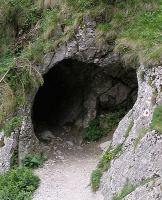I have suggested that the land of Bountiful was located in the San Juan River basin in northeastern Costa Rica, between the river and the central chain of volcanoes. This is the area now composed of the plains of San Carlos and Guatuso, and extends from the eastern Caribbean coastal plains, almost to the Pacific Ocean on the west. It forms the southern watershed of the Lake Nicaragua/San Juan River system.
This area has an interesting geography. It is bound on the north by the San Juan River, and on the south by a chain of volcanoes trending roughly NW-SE. These volcanoes form the Cordillera Central and the Cordillera de Guanacaste of Costa Rica. A number of voluminous rivers drain the mountain chain flowing northward down into the San Juan River, and thence out to the Caribbean.
The San Juan River is roughly parallel to the landward extension of the Hess Escarpment, a 620 mile long linear feature striking ENE on the floor of the Caribbean Sea. This escarpment is a continental scale strike-slip fault that separates two plates, the Caribbean Plate to the south, and the Chortis Block to the north. (A strike-slip fault is similar to the San Andreas Fault in California and is one in which the movement is horizontal instead of vertical.)
Before agriculture became dominant in this area, it was mostly tropical lowland rainforest. It receives extremely heavy rainfall all year long with a relatively insignificant “dry” season. The prevailing, moisture laden, winds are to the SW blowing off the Caribbean. The mountain chain effectively precipitates the majority of the rainfall on the NE drainage of the highlands, and this flows down the numerous rivers to the San Juan River. The climate is hot, humid, and tropical. It is an ideal climate for many crops such as bananas and pinapple.
The terrane is relatively flat, especially toward the north, with an increase of rolling hills, and then more elevated foothills, as one approaches the volcanoes to the south, which rise abruptly from the lower plains. The soil is very rich and productive, being derived from numerous ancient volcanic deposits.
The plains are of volcanic origin and are mainly composed of lahars and ash fall deposits coming from the mountains to the south. Coarser sediments predominate toward the mountains, with finer deposits increasing as you approach the northern river.
A word on lahars which are so predominate in this area of Costa Rica: Lahars (or volcanic debris landslides) are a product of volcanic eruptions, but are not necessarily directly related to the eruption itself. They can form whenever there is a sufficient grade, and water content (about 30%), to mobilize an unstable mass of rock, rubble, or ashfall. They are very powerful and can destroy most natural or man-made barriers. They travel rapidly and can go as far as 50 miles destroying and enundating everything in their path.
Many lahars are formed when a volcanic lake is breached, or when a volcanic eruption melts snow or ice on a volcano, sending an avalanch of water and debris down the flank of the mountain.
A historic example of a lahar was observed during the Mt. Saint Helens eruption of 1980. One lahar from this eruption traveled 50 km. destroying everything in its course. It had an estimated volume of 140 million cubic meters, or 183 million cubic yards. This study estimated that a lahar can travel at 20 meters per second with a discharge volume of 100,000 to 200,000 cubic meters per sec. The authors point out that this “estimated instantaneous discharge is about 10 times the mean annual discharge at the mouth of the Mississippi River.”(1)
Both the San Carlos, and the Guatuso plains of Costa Rica are mostly covered by Pliestocene age lahar deposits. Many of these ancient lahars extended far to the north, approaching the San Juan River. One particularly large depost is located on the border between the San Carlos and the Guatuso cantons (counties) in the north of Costa Rica and can be seen on the local topogaphic map (San Carlos CR2CM-2) as a prominent ridge extending northward toward the city of Los Chiles, between the Sabogal and Pocosol rivers.
The voluminous sedimentation and lahar deposits may have altered the original geography of the San Juan River basin. It is possible that the river may have had a different course in ancient times. The voluminous sediments, encroaching from the south, could have gradually moved the riverbed northward.
Another possibly to consider: several deep drill holes in Costa Rica and Nicaragua have encounter serpintinites under the younger volcanic sediments. This suggests that the area may have been sea floor at one time. Could the San Juan basin actually have been an ocean embayment at an earlier time?
If this is correct, the area might have originally been a modified back arc basin with the volcanic arc to the south; a back arc basin which has gradually been filled with sediments from the volcanoes to the south.
(1) Volcaniclastic Sedimentation in the Lewis River Valley, Mount St. Helens, Washington. USGS Report 1383-D, 1988.
References:
References:
Cantones de San Carlos and Guatusos (link is dead).



No comments:
Post a Comment